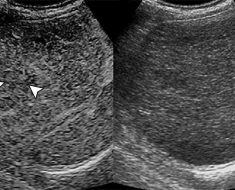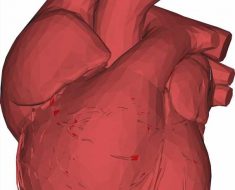Anti-NMDAR encephalitis is a condition in which acute psychiatric symptoms and physical signs develop following the development of autoimmune antibodies to N-methyl D-aspartate (NMDAR) receptors. These receptors are made up of 2 subunits, the NR1 and the NR2 (which is of several types – A, B, C or D) combined in several different combinations.
The NMDAR are ligand-gated, with the NR1 and NR2 subunits binding to different amino acids, such as glycine and glutamate respectively. The various receptor subtypes are acted upon by drugs in different ways, are concentrated in different locations, and interact differently with the ions and other chemicals that signal intracellular events. Their overactivity or conversely underactivity leads to excitation at a toxic level, and schizophrenia, respectively. The effects of toxic excitation may include seizures, strokes or dementia.
When antibodies attack these receptors, a distinct syndrome evolves called anti-NMDAR encephalitis. This has three characteristically progressing phases in most patients, consisting of the prodromal, psychiatric and physical symptoms. In a small percentage of cases, this progression is atypical. It was first reported in young women with ovarian teratomas, who presented with acute psychiatric or memory-related problems, but quickly worsened to the point of requiring intensive medical care for a long period. At the same time, immunotherapy and removal of the tumor often led to a favorable outcome with almost complete recovery.
This article describes the different risk factors involved in anti-NMDA encephalitis.
Gender
In one large series, over 80% of patients with anti-NMDAR encephalitis were females, mostly between the ages of 12 and 45 years. However, there were larger percentages of male patients below the age of 12 (about 4%) and above 45 years (43%).
Tumors
The first cases noted were in young women with ovarian teratomas, which are germ cell tumors. This is thus a classic paraneoplastic syndrome, and as such very often responds to treatment of the tumor and removal of the toxic antibodies. An association with certain specific cancers is common (from 26% to about 60%) in this condition, and therefore a history of these tumors should be sought in patients who have psychosis or mania of new onset, especially:
- Ovarian and extraovarian teratoma (94% and 2% respectively), more often in Asian and African-American women (above 45%) compared to Caucasian and Hispanic women (31% or less)
- Small cell cancer
- Breast cancer
- Thymoma
The last three groups together comprise 4% of all cases, and were mostly in patients above 45 years.
Therefore, all patients who have a history of these tumors and present with acute psychiatric symptoms or similar conditions should undergo testing for this condition. On the other hand, patients with documented anti-NMDAR encephalitis must be screened for occult tumors even if their history is negative. This is highly recommended to be repeated in the form of MRI scans of the pelvis and abdomen, unless they are males or under the age of 12 years (in which case this type of testing may not have much value).
A Viral Prodrome-like Illness Preceding Psychiatric Symptoms
In many patients with anti-NMDAR encephalitis the few weeks immediately before the acute onset of psychiatric or cognitive symptoms were marked by nonspecific symptoms such as headaches, breathing difficulties, gastrointestinal disturbances, anorexia, slurring of speech, and sleep disturbances. This is postulated to be due to early activation of the immune system, or due to immune reactions crossing the blood-brain barrier because of some nonspecific infection. This type of setting should raise the level of suspicion for this condition.
Postpartum Period
Another high-risk group comprises postpartum women with acute and severe psychosis, especially if they react to antipsychotic medication by developing extrapyramidal dyskinesias (abnormal involuntary movements) at low doses. This is a characteristic reaction in anti-NMDAR encephalitis. Though the percentage is small, about 2%, this group is one which should be screened for antibodies in the above clinical situation. This subgroup is not associated with the presence of tumors. The increased risk may be explained by the fact that these are young women, with rebound immune activation following delivery, which is naturally a period when they are prone to autoimmune phenomena.
Psychiatric Symptoms Followed by Neurologic Signs
Any patient without neurologic symptoms even 4 weeks or more after the psychiatric symptoms are first observed, is unlikely to have anti-NMDAR encephalitis, though about 4% of the latter have isolated psychiatric disease.
Other Autoimmune Diseases
Yet another risk factor is the presence of other autoimmune disorders, which may suggest that the psychiatric symptoms are due to anti-NMDAR antibodies. This has not been accepted by all experts as an increased risk factor as of date.
Sources
- https://www.ncbi.nlm.nih.gov/pmc/articles/PMC2607118/
- https://www.ncbi.nlm.nih.gov/pmc/articles/PMC2430743/
- https://www.ncbi.nlm.nih.gov/pmc/articles/PMC4495821/
- https://www.ncbi.nlm.nih.gov/pubmed/23507817
- https://www.ncbi.nlm.nih.gov/pmc/articles/PMC4854531/
- https://www.ncbi.nlm.nih.gov/pmc/articles/PMC3563251/
Further Reading
- All Encephalitis Content
- What is Encephalitis?
- What can Aedes mosquitos transmit?
- Autoimmune Encephalitis Classification
- Autoimmune encephalitis
Last Updated: Feb 26, 2019

Written by
Dr. Liji Thomas
Dr. Liji Thomas is an OB-GYN, who graduated from the Government Medical College, University of Calicut, Kerala, in 2001. Liji practiced as a full-time consultant in obstetrics/gynecology in a private hospital for a few years following her graduation. She has counseled hundreds of patients facing issues from pregnancy-related problems and infertility, and has been in charge of over 2,000 deliveries, striving always to achieve a normal delivery rather than operative.
Source: Read Full Article





